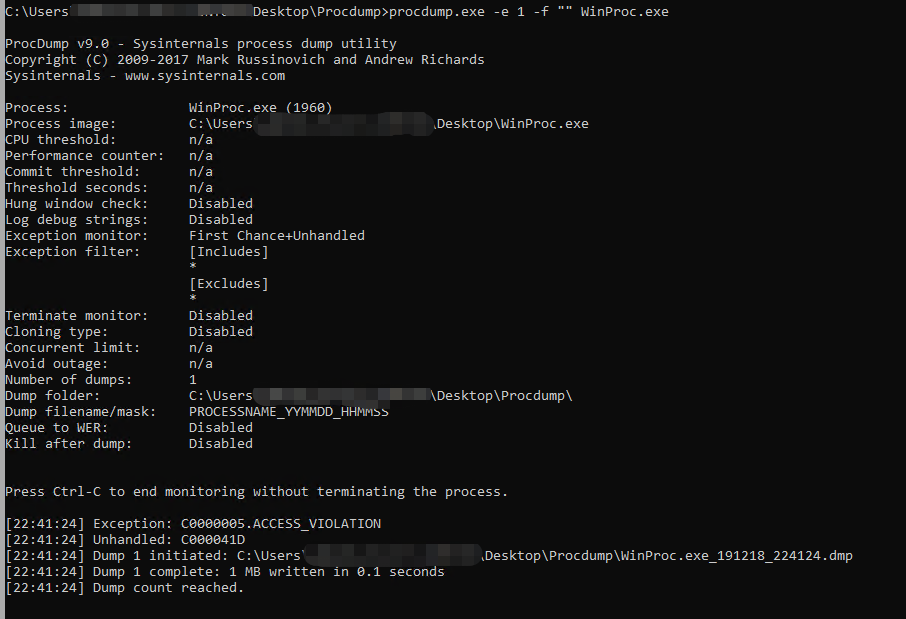Exception 0xC000041D means that an unhandled exception was encountered during a user callback. It means that 0xC000041D is a second chance exception. So we should capture the first chance exception ,if we want to know the root cause. Usually it’s occurred in system defined callback context on Windows, for example message handling context. And customized callback will not throw the exception
How to Simulate Exception throw in user call back?
Check below console application sample. It will throw first chance exception of 0xC0000005 and then throw second chance exception of 0xC000041D.
#include "pch.h"
#include <iostream>
#include <Windows.h>
#pragma comment(lib, "user32")
WNDPROC OriginalProc = NULL;
LRESULT CALLBACK NewProc(HWND hwnd, UINT uMsg, WPARAM wParam, LPARAM lParam)
{
int* p = nullptr;
*p = 1;
return OriginalProc(hwnd, uMsg, wParam, lParam);
}
int main()
{
system("pause");
HWND hWnd = CreateWindowEx(0,TEXT("SampleOfUserCallbackException"),TEXT("0xC000041D"),
WS_OVERLAPPEDWINDOW | WS_VISIBLE,
CW_USEDEFAULT, CW_USEDEFAULT, CW_USEDEFAULT, CW_USEDEFAULT,
NULL, NULL, NULL, NULL);
OriginalProc = (WNDPROC)SetWindowLongPtr(hWnd, GWLP_WNDPROC, (LONG_PTR)NewProc);
UpdateWindow(hWnd);
system("pause");
}
How to Capture the original exception?
We can use procdump to capture the original first chance exception with below command:
procdump -e 1 -f "" processname
For example: In below picture, we can see the first chance exception is 0xC0000005, Access Violation.

There is an actual issue in my previus blog. For mre details, you can read the content of Application based on ATL6.0 crashed on Windows 10
文档信息
- 本文作者:Robin Chen
- 本文链接:https://crushonme.github.io/2019/12/17/How-To-Solve-Exception-0xC000041D/
- 版权声明:自由转载-非商用-非衍生-保持署名(创意共享4.0许可证)
Document Information
- Author :Robin Chen
- Link : https://crushonme.github.io/2019/12/17/How-To-Solve-Exception-0xC000041D/
- Copyright:Attribution-NonCommercial-NoDerivatives-No additional restrictions(CC BY-NC-ND 4.0)
